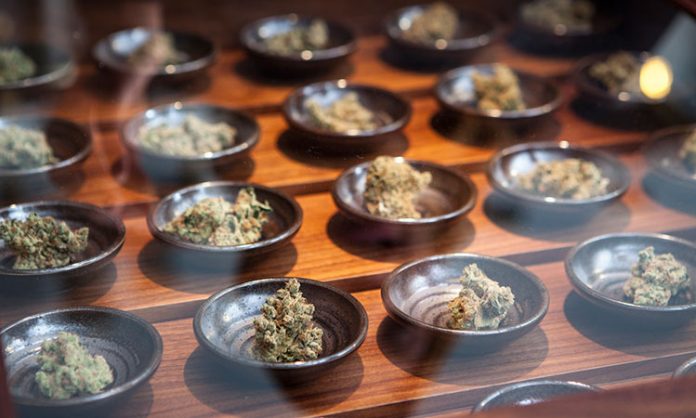A key goal of legalizing recreational cannabis is squeezing out illegal suppliers. But how competitive will legal cannabis retailing be against established black markets?
That’s a key question for federal and provincial politicians. Governments don’t like cannabis consumers funding organized crime.
That question may also interest investors. They’ve pushed up cannabis stock prices and created demand for four cannabis exchange-traded funds. Alcohol and tobacco companies have bought stakes in cannabis growers. Suppliers of hydroponic equipment and online retailing software could benefit too.
To answer the question, consider the “four Ps” that marketers work with in every industry. Those are the product characteristics, price charged, place where sold and promotion activity. From this viewpoint, legal vendors have some potential advantages. But they face major challenges under current government plans.
Pricing Challenges
Price is the competitive element politicians mention most. In Colorado, cheap legal cannabis means black markets control only 20 per cent of state sales. But in Washington state, where prices are higher, black markets capture 50 per cent.
In Canada, governments agree cannabis prices must be competitive. They’ve suggested $10 per gram, including excise and sales taxes.
But Statistics Canada estimates market prices fell below $7.50 last year, and farther since then. Vancouver street prices reportedly are near $5. And street vendors don’t charge tax.
Meanwhile, most provinces lack confirmed supplies, so they risk product shortages initially. Growers might prefer exporting their limited stocks to Germany’s higher-priced medical cannabis market.
Provincial governments could face awkward choices. If they price high to cover costs, they’ll be uncompetitive. If they price low to compete, taxpayers may end up subsidizing drug users.
Longer term, more growing capacity will come online and enable lower prices.
Other pricing questions remain unanswered. Will all products share the same price? Or will prices differ by brand? Will each retailer set their own prices?
Retailers Lack Convenience
The places cannabis is sold also affect competitiveness. The western provinces will allow private-sector retailers. Ontario and its eastern counterparts are keeping retail in the public sector.
The public-sector plans lack convenience due to limited store numbers. That aids the black market.
For example, Ontario plans 150 outlets by 2020. That’s only one per 95,000 people, about as common as Walmart. It’s enough for planned shopping trips, but not for consumers who have unexpectedly run out.
By contrast, Ontario has 2,067 locations selling alcoholic beverages: One per 7,000 people. Those include liquor agency outlets, beer stores and wineries.
Quebec also expects 150 cannabis outlets eventually, or one per 56,000 people. New Brunswick plans 20, so one per 38,000.
Contrast those numbers with Colorado’s. It has more than 800 stores, or one per 6,250 people.
Private stores out West will likely be more numerous. But they’re banned from selling alcohol or tobacco. That specialization will restrict retailers’ revenue sources and the number of viable stores.
Provincial plans have barely mentioned on-site consumption. Countless bars and restaurants serve alcohol drinkers. Licensed cannabis “lounges” similarly could serve cannabis users, especially renters in non-smoking buildings and American tourists. Otherwise, those groups may stick with black markets.
Product Advantages
Consumers can’t evaluate cannabis products without smoking them. The cannabidiol (CBD) and tetrahydrocannabinol (THC) concentrations vary greatly. Consumers also can’t detect contaminants like pesticides and mold.
Quality-assurance measures therefore could give legal cannabis products a competitive edge. Each province except Saskatchewan plans a single public-sector wholesaler. That centralization will facilitate large-scale testing.
Consider Ontario’s liquor agency. Its Quality Assurance Lab examined 28,000 beverages last year, rejecting 11 per cent.
Quality assurance, combined with recognizable brand names, would help products develop performance reputations. Some may offer a mild buzz, others a powerful high. Consumers could learn to rely on consistently performing brands, instead of unpredictable street weed.
However, branding faces challenges. Federal law limits package designs. No people, animals or lifestyle images are allowed.
Some critics even want plain packages, to discourage cannabis adoption. But that would make it harder for growers to establish reputations, neutralizing a key advantage over illicit products.
It would also reduce growers’ incentive to boost quality, especially if prices are fixed. As near generics, they’d instead try to lower production costs. Or perhaps hike THC numbers to stand out. Should we encourage cheaper, stronger pot?
The lack of edibles, like brownies and beverages, is a glaring gap. Ottawa won’t legalize those for another year. Unlawful suppliers keep market control until then.
Promotion Limits
Federal rules also limit promotional activity. “Informational” ads are OK. But no evoking emotions, and no lifestyle depictions involving recreation or excitement.
Those clauses undermine legal cannabis’ competitiveness. Good ads evoke emotions. Lifestyle images explain complex products simply. And isn’t this law about “recreational” use? Growers consequently have proposed more flexible rules.
Because federal law prohibits self-service, sales staff will be important. Store ownership may matter here. Public-sector staff might be better at consumer education and harm reduction. Private-sector sellers may respond better to customer preferences and market trends.
Regarding in-store promotion, New Brunswick will display products under glass. Consumers will see packaging, read labels and visually compare products.
But Ontario wants things “similar to how tobacco is now sold.” That implies customers won’t see or touch products before purchase. It’ll be tough for consumers to develop preferences, and for growers to build reputations. That further weakens legal products’ competitiveness.
Prognosis Is Mixed
Overall, governments’ retailing prospects look mixed. Legal cannabis could stand out on product quality if growers earn reliable reputations. But edibles remain absent for now. Promotion could give legal cannabis another edge, if governments loosen up the rules.
The ConversationBlack markets will initially out-compete the provinces with convenient places. That will decrease over time, especially out West. But it won’t disappear without legalized lounges. Illegal vendors may always have some price advantage. Provinces can minimize that by forgoing profits.














